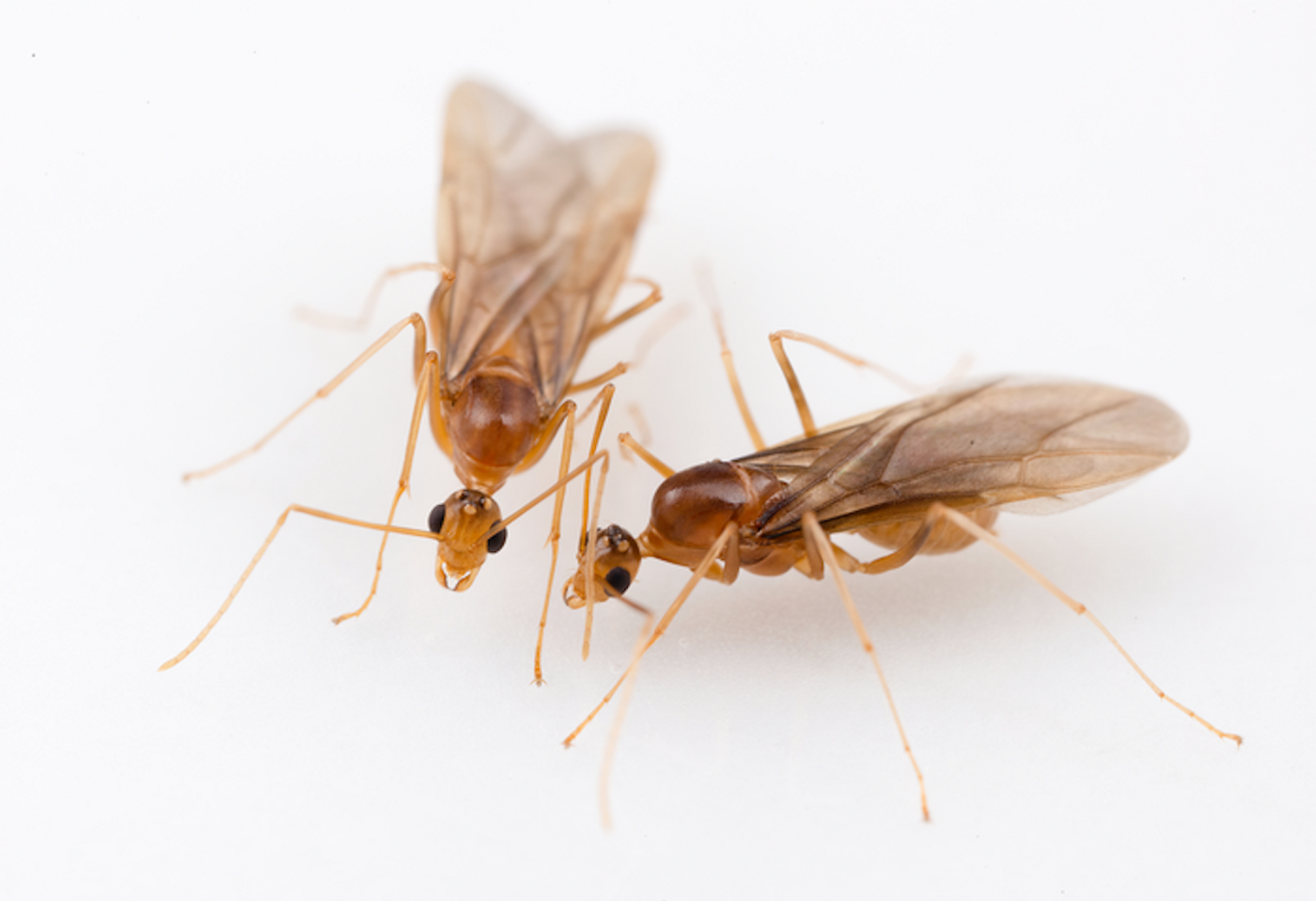The Wild Genetics of Crazy Ants
Scientists have discovered that in male yellow crazy ants, different cells carry one of two sets of DNA. While this species is known for its powerful invasive abilities, this research has shown that these animals are also chimeras. Researchers were not expecting to find two copies of every chromosome when they analyzed the genetics of these ants, because in ant, bee and wasp species, males typically grow from unfertilized eggs, which should give them only a single, maternal copy of every chromosome, noted Dr. Hugo Darras, Assistant Professor at Johannes Gutenberg University Mainz (JGU). Darras is lead study author of a report in Science that outlined the phenomenon.
The investigators looked at the genomes of individual cells in these male yellow crazy ants, and found that in different cells from the same male ants, there might be the maternal or the paternal genome; the ants are chimeras. "To put it another way, all males have two genomes, but each cell of their bodies contains only one or the other of the two genomes," Darras explained. Both sets of genomes are also active in these ants.
In chimeras, different cells have different genomes, which is a very rare situation. In the vast majority of cases, all cells carry the same genome in a multicellular life form. There are a few exceptions, of course. In corals or angler fish, for example, it is possible for two individuals to merge as one, and they are natural chimeras. Some humans can be chimeras as well, if there is an exchange of maternal or fetal cells during pregnancy, an offspring may carry some cells that are identical to the maternal cells. Twins in the womb can also exchange cells. But this tends to be limited to a few cells, and is not widespread in the body.
However, the situation in male crazy ants is different. "In contrast to these known cases, chimerism in the yellow crazy ant does not result from the fusion of two separate individuals or an exchange of cells between them. Instead, this process has its origin within a single fertilized egg. This is unique," noted Darras.
Their unusual genetics could also be priming them to be expert invaders. If only a small number of these crazy yellow ants move to new territory that is unfamiliar, they can continue to reproduce even though finding new mates is extremely challenging and the new population will be highly inbred.
Sources: Johannes Gutenberg Universitaet Mainz, Kronauer Science 2023, Darras et al Science 2023









